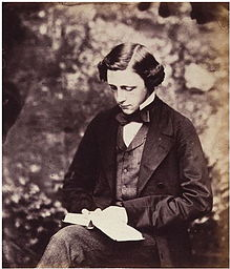
Email: EllaTournes@bexleygs.co.uk
Total Article : 45
About Me:Sixth form student currently studying English Literature, Drama and Theatre Studies, Classical Civilisation and History.

For our Year 13 devised piece, we chose to perform in the style of ‘Total Theatre’, particularly focusing on the practices of Tourdeforce, Antonin Artaud and Steven Berkoff.
Our dramatic intentions are to:
- Educate our audience on the social and literary context of 'Alice in Wonderland'
- Draw parallels between real-life context and fictional events in 'Alice in Wonderland'
- Explore, with sensitivity, the issue of paedophilia in its Victorian context
As one of our intentions is to draw parallels between the fictional and real-life aspects of ‘Alice in Wonderland’, we thought it would enhance our audience’s appreciation of creative context to make our own piece blur the lines between real and fictional; i.e., to make our piece more immersive and ‘total’. When we saw Tourdeforce’s ‘Great Gatsby’, we noted, and attempted to emulate, the extension of the set, and the performance atmosphere, into the audience’s space. As the audience walked into the performance space, they were submerged into 1920’s America. Tourdeforce did this by using background music and various period paraphernalia. We incorporated their ideas by playing period music as the audience enter the room, and having them seated as if at a Victorian tea party, with tables set with curates and afternoon tea sets. Inspired by their repeated depiction of Fitzgerald’s ‘green light’ motif with green gels, we also chose to allude to various Wonderland motifs in our set, such as playing cards or red and white roses, all of which the audience can interact with. We also refer to the audience as ‘tea-goers’, giving them a role within the piece.
The exploration of metaphysics unifies our source material, ‘Alice in Wonderland’, and the dramatic theory of Antonin Artoud. Artoud pioneered the destruction of boundaries in theatre – something that we wanted to apply to our ‘Mad Hatter’ scene. We wanted to fully immerse our audience in Carroll’s Wonderland at this point, by interacting with them, and breaking the fourth wall. We also wanted to thoroughly unsettle them in preparation for the revealing of the darker elements of the piece – for this, we attempted ‘direct staging, around themes, facts, or known work’ (our known work being Carroll’s novel). We used Artoudian methods we saw used in ‘Jet of Blood’, such as a Vortex of Sound, assault of the senses, effective uses of chanting and voice, and lurches between pace and dynamic of expressive movement. We thought that Artaud’s acceptance of Surrealism, and subsequent rejection of traditional theatre, mirrored Carroll’s rejection of Victorian societal mores and his escape into the nonsensical. Stylistically, the use of Artaud’s influence paved the way for a darker reading of ‘Alice in Wonderland’ that we wanted to explore; a reading that renders Alice objectified and powerless.
Through the exploration of the physical aspects of ‘Total Theatre’, we discovered the importance of giving one’s whole body to a performance. We decided to perform our ‘Wonderland’ characters in a physical style influenced by Steven Berkoff. For example, the character of Maggot from ‘Sink the Belgrano’, with her received pronunciation, and her treatment of those that are of lower status than her, formed much of the basis for the physicalisation of our Queen of Hearts. We thought that the hyperbolic, mime-like creation of a physical environment befitted the nonsensical characters of Wonderland, both in its extremity, and its complete deviation from naturalism. Berkovian speech, as we saw from Shaun Dooley’s performance when describing the scent of a woman in ‘Lunch’, explores language in a ‘total’ fashion, exploring and overenunciating sharp plosives (like ‘crossed’ and ‘skirt’) as well as luxuriating in slow vowel sounds (like ‘devouring’). As our piece intends to explore a prominent piece of literature, we thought that applying the way Berkoff uses and appreciates language and speech, was particularly apt.
Plays read/seen:
‘Sing the Belgrano’ by Steven Berkoff
‘Lunch’ by Steven Berkoff
‘Great Gatsby’ by Tourdeforce
‘Jet of Blood’ by Ignite
Theoretical sources:
‘The Theatre and Its Double’ by Antonin Artaud

0 Comment:
Be the first one to comment on this article.